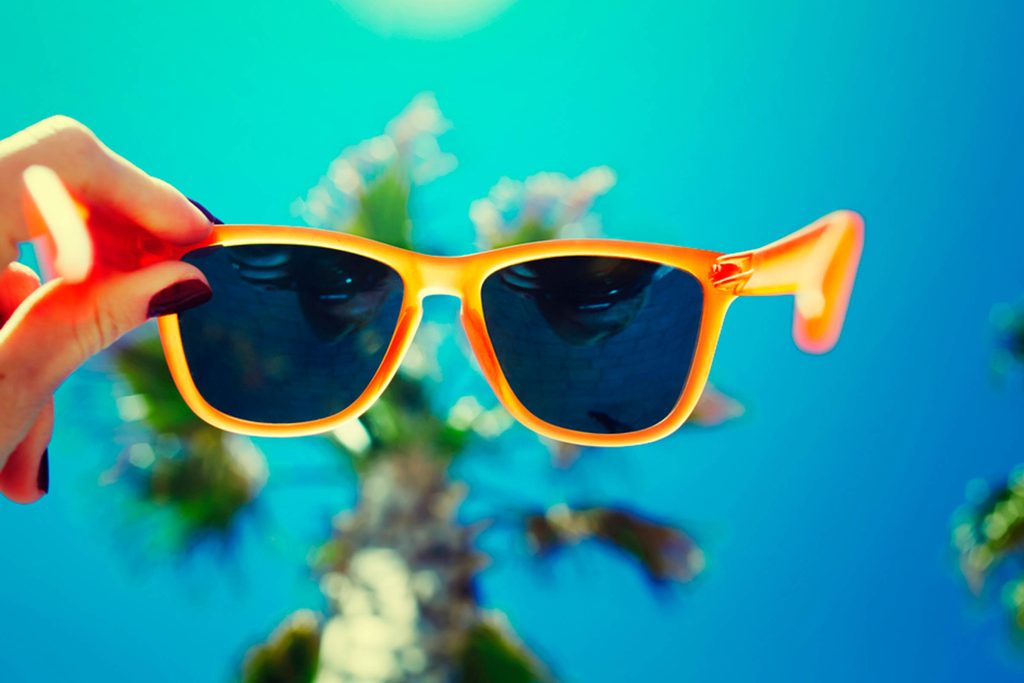
Protect your vision
From department stores to specialty stores to bodegas at the beach, sunglasses can be found anywhere and everywhere for as little as $5. And then there are all those sunglasses myths that could ruin your eyes. But when it comes to buying a pair, it can be difficult to know what to look for. First and foremost, the sunglasses need to offer 100 percent UV protection, says Covry Eyewear founders Athina Wang and Florence Shin. “Even on a cloudy day, harmful UV rays are still present so it’s important that your sunglasses are doing an essential job of protecting your eyes,” they say.
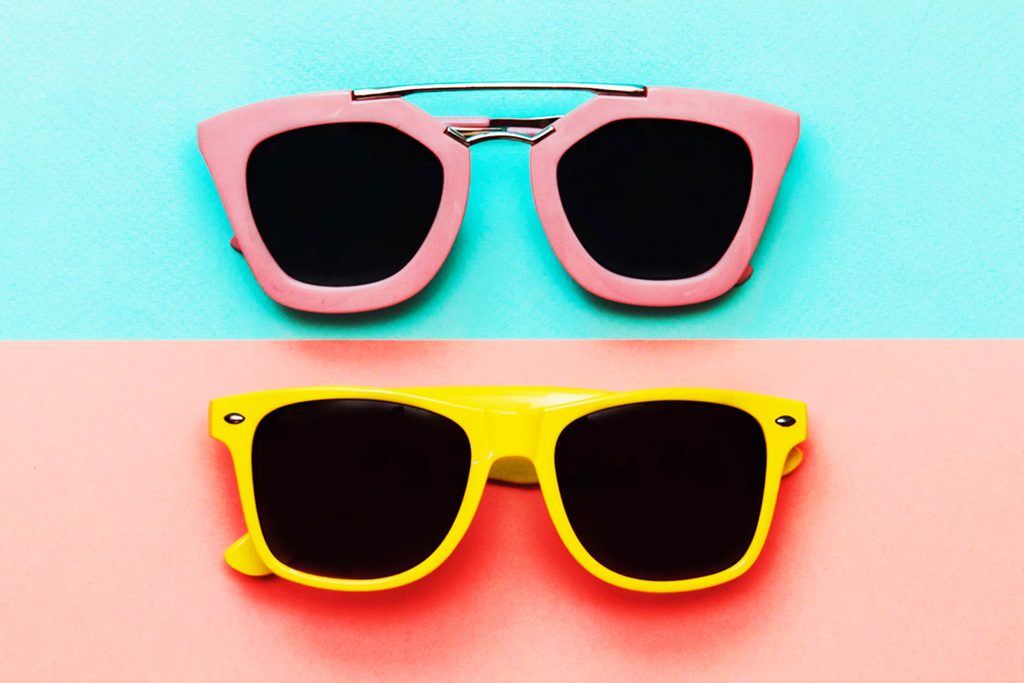
Analyze your favorite pair
Many sunglasses, even the same pair, are available in a variety of sizes. “If you already own a pair of frames that fit great, you can usually find the frame measurements on the interior of the temples,” says Wang and Shin. “Then, shop for frames that are similar in size for a similar fit.” Some sizes are also better for specific face shapes.

Get the right size
Shopping for sunglasses will require testing out a few pairs. Frame size should be determined by a few things, according to eyecare-on-wheels company, 2020 On-site. First, customers should look for where the eyes are centered. “This will create the best vision and the best aesthetic look for the customer,” says Shazia Ahmed, MD, 2020 On-site’s chief medical officer, and Ivan Quiroz, 2020 On-site’s senior regional retail manager. “Lens thickness can also be affected if the eyes are too close together or too far apart in the lens, creating thickness on the outer edges.” The bridge of the nose piece also needs to fit perfectly. When the bridge is too small, it can pinch and create a sore spot; when it’s too big, it can chafe the nose and cause irritation, the 2020 On-site experts say. The frame arms also need to lay parallel. If they are too small, they will bow outward and stretch; if they are too large, the sunglasses will fall forward. Also, the ear pieces “should have a good bend behind the ear in order to hold the frame in place,” says Ahmed and Quiroz.

Size up your face shape
If a shopper is self-conscious about her face, she might want to see which sunglasses shape look best for her face shape. (Here are some tips for finding the best shape for your face.) “As everyone will tell you, an oval face is the lucky draw: You can basically wear whatever you want, since the ratio of your features is already even,” says eyeglasses company Warby Parker. “This face shape can experiment with frames in unique shapes. A rounder frame will work well with a more angular face.” Softer edges will complement a square face, and rounder faces will benefit from distinct, angular frames. Warby Parker also recommends frames that are wider at the bottom to balance out the angles of a heart-shaped face.

Keep it cool
Keep your sunglasses cool—literally! During summer, the heat will cause the material to expand and stretch over time, according to 2020 On-site. A monthly “tune up” will help keep sunglasses in the best shape. Make sure to check out seven other tips to extend the life of your glasses.
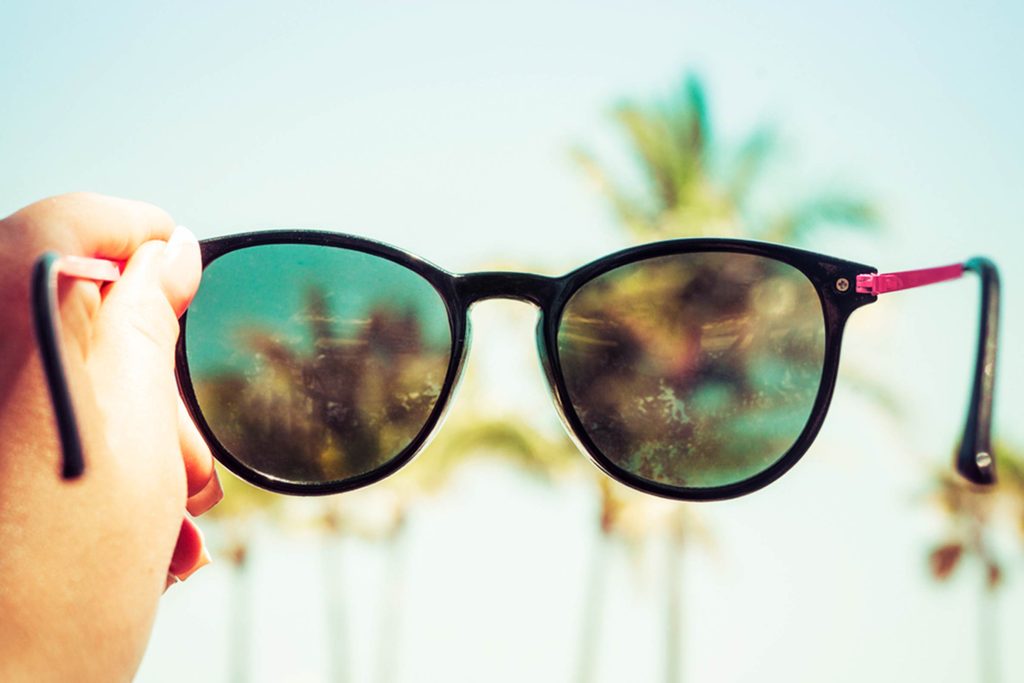
Polarize
Although polarized lenses are optional, it’s an option you’ll want: Polarizing cuts the glare that comes from snow, water and car windows, says the 2020 On-site experts. “This will help protect the eyes from sun damage better than your standard UVA and UVB lenses and will help with squinting and eye strain on not only sunny days but overcast days as well,” says Dr. Ahmed. “The sun is still strong on cloudy days and can cause damage.” Polarized lens are also very trendy and come in a variety of colors. However, the experts warn customers to keep an eye out for cheap polarized sunglasses, which can warp and cause eyestrain, headaches, or eye discomfort.
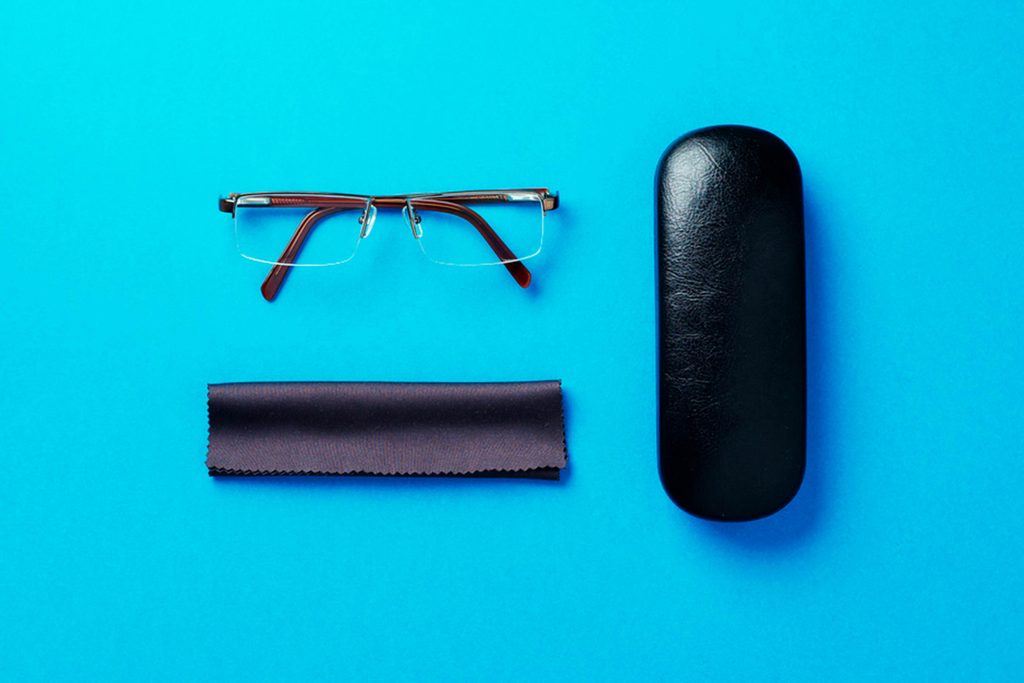
Choose lenses that change
“Transition lenses are great for those who want to carry the fewer pairs of glasses, but still have the protection they need to be outdoors,” says Dr. Ahmed and Quiroz. “Transitions will start to activate in direct UV light. Unfortunately, they do not activate completely in cars (windshields are UV protected), so if you are an avid driver, these may not be the best option for you.” Want some tips on boosting your vision?
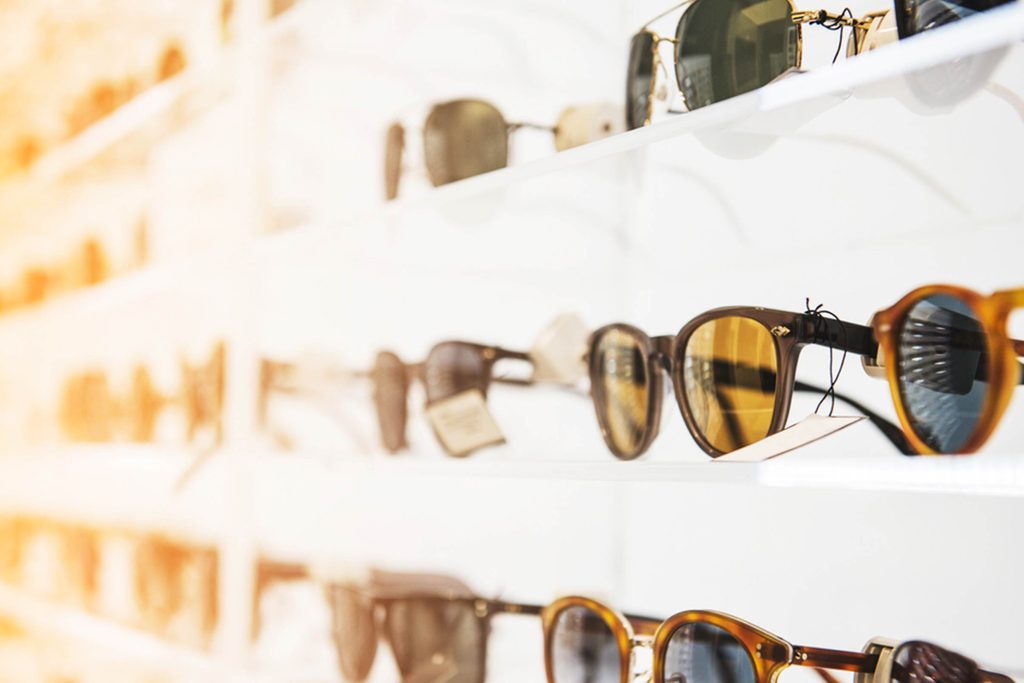
Break open the piggy bank
Prescription sunglasses can cost between $200 to $300 depending on insurance and in-store sales. Vision benefits will help customers get the most of their coverage and reduce costs, says 2020 On-site. Although pricing is affected by brand and make of the glasses, non-prescription sunglasses can start as low as $50 and reach upwards of $200. There are also some discounts that are given to customers who buy multiple pairs, one of the things you should know before you buy sunglasses online.

Don’t forget to cover the kids
Customers should make sure to invest in sunglasses for their children as well. “Children run the risk of a higher UV exposure because their pupils are larger and their eyes are still developing,” says Dr. Ahmed and Quiroz. “Remember, sunglasses are sunscreen for the eyes, lather up before you leave the home.”

The 1970s are back
For the fall, watch for the aviator double bar and a round plastic front glasses that were popular 40 years ago. (Think of Ponch and Jon from the 70s TV show CHiPs). Another popular look is the blue- or pink-colored mirror coating, according to the 2020 On-site experts.
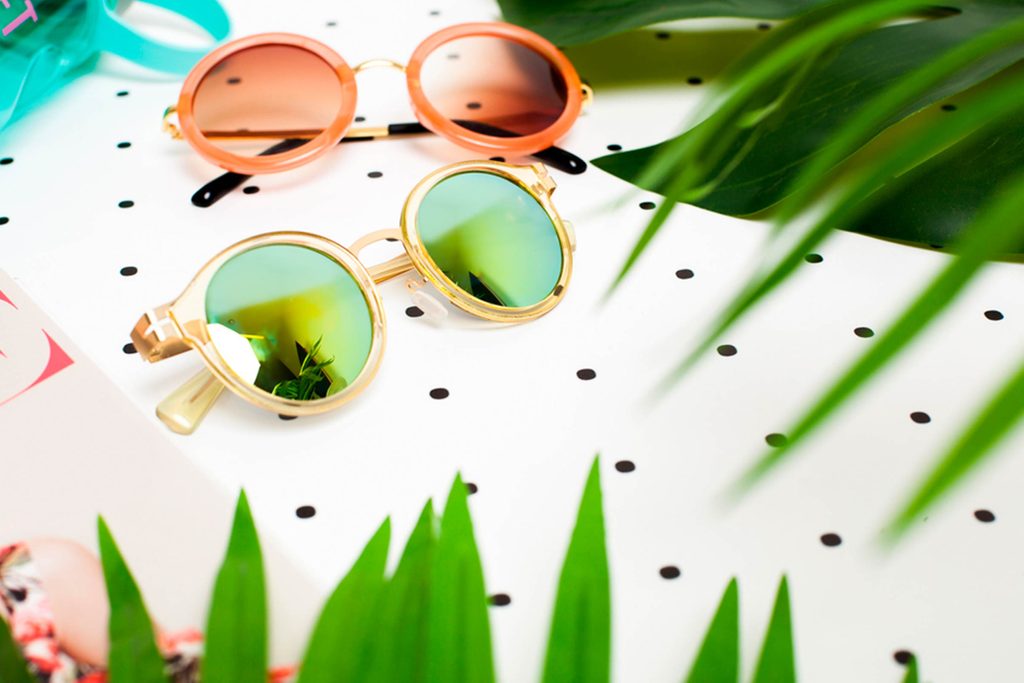
Get a tune up
If your sunglasses keep sliding down your face, your local optician can make an adjustment, says Dr. Ahmed. Heat is applied to make the earpiece to be more malleable and is bent to prevent sliding. The 2020 On-site experts emphasize that this is not a time for DIY; if done incorrectly, the piece can snap off.
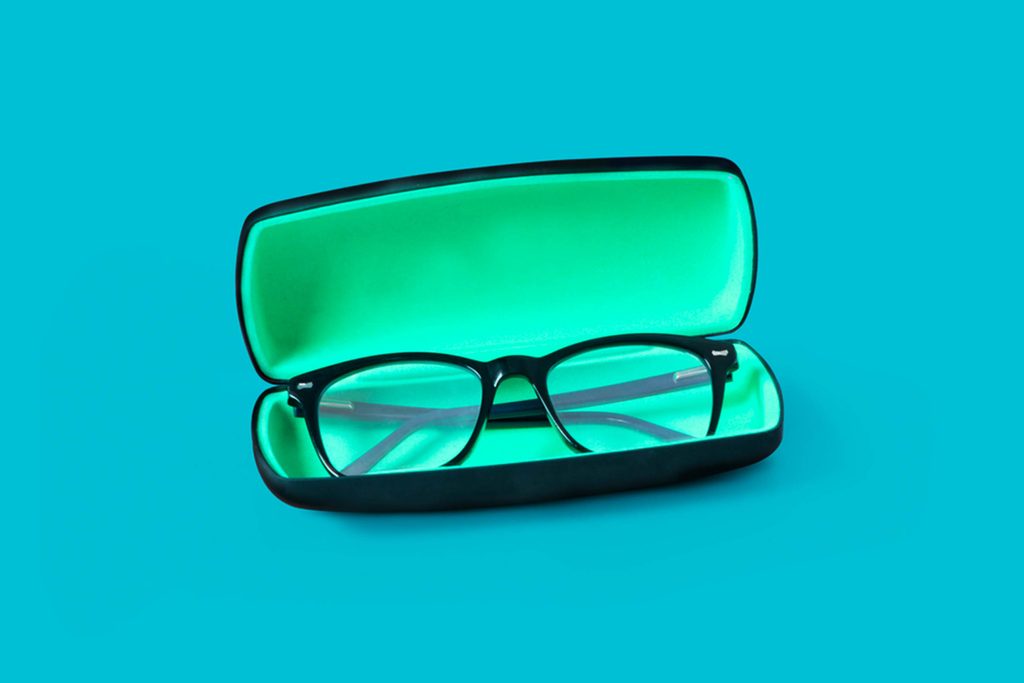
Cases mandatory
Most importantly, sunglasses should be kept in a soft case to prevent breakage and scratches. If anything does break off, such as nose pads or arms, 2020 On-site recommends that customers bring their sunglasses to an optician. While they’re fixing the sunglasses, they’ll also polish the lenses and replace worn-out nose pads.